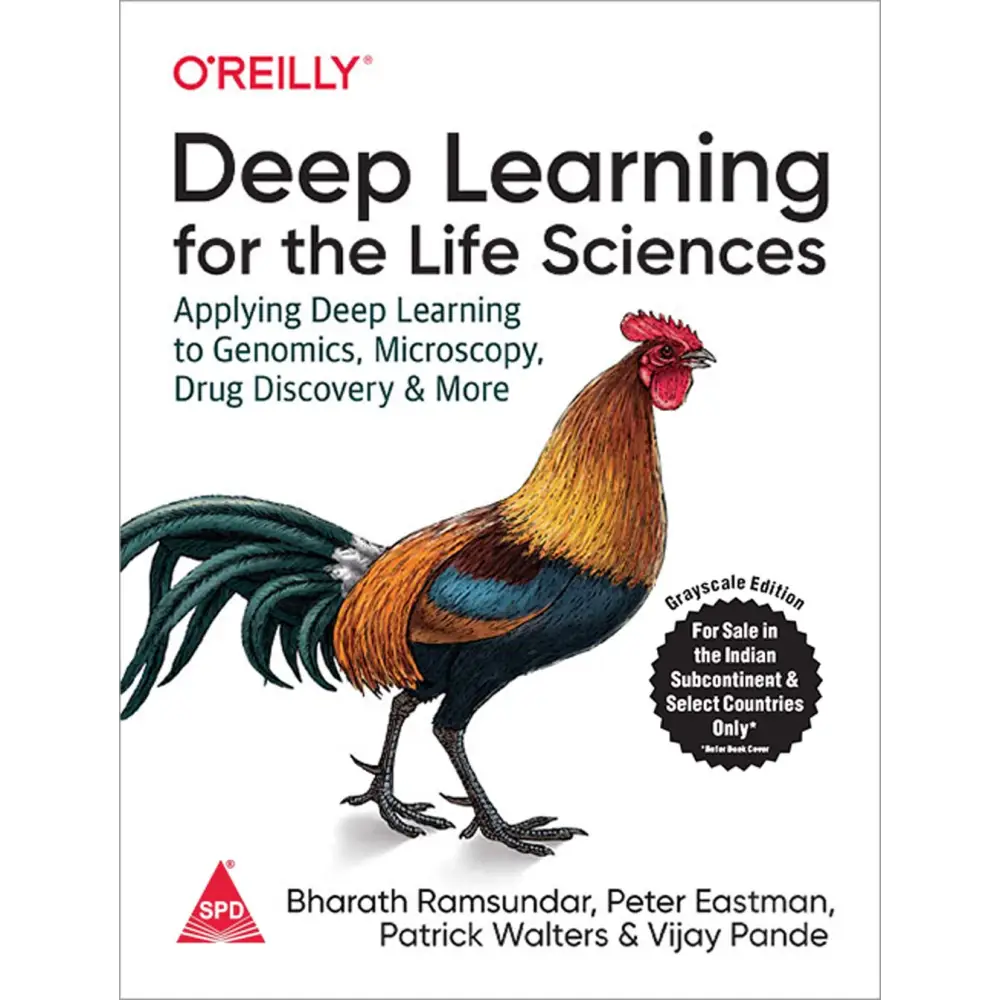BOOKZONE
Deep Learning for the Life Sciences: Applying Deep Learning to Genomics, Microscopy, Drug Discovery, and More (Paperback)
Paperback
by Bharath Ramsundar
SKU:9789352138333
Bulk Discount Get Exta 5% upto 10%
Share

Deep learning has already achieved remarkable results in many fields. Now it’s making waves throughout the sciences broadly and the life sciences in particular. This practical book teaches developers and scientists how to use deep learning for genomics, chemistry, biophysics, microscopy, medical analysis, and other fields.
Ideal for practicing developers and scientists ready to apply their skills to scientific applications such as biology, genetics, and drug discovery, this book introduces several deep network primitives. You’ll follow a case study on the problem of designing new therapeutics that ties together physics, chemistry, biology, and medicine—an example that represents one of science’s greatest challenges.
- Learn the basics of performing machine learning on molecular data
- Understand why deep learning is a powerful tool for genetics and genomics
- Apply deep learning to understand biophysical systems
- Get a brief introduction to machine learning with DeepChem
- Use deep learning to analyze microscopic images
- Analyze medical scans using deep learning techniques
- Learn about variational autoencoders and generative adversarial networks
- Interpret what your model is doing and how it’s working
About the Author
Bharath Ramsundar is the co-founder and CTO of Computable, ablockchain company working to build a decentralized data marketplace for AIapplications. Bharath is also the lead developer and creator of DeepChem.io, anopen source package founded on Tensorflow that aims to democratize the use ofdeep-learning in drug-discovery, and the co-creator of the moleculenet.aibenchmark suite.
Vijay Pande PhD is a general partner at Andreessen Horowitz where heleads the firm’s investments in companies at the cross section of biology andcomputer science including areas such as the application of computation,Machine Learning, and Artificial Intelligence broadly into Biology andHealthcare as well as the application of novel transformative scientificadvances. He is also an Adjunct Professor of Bioengineering at Stanford, wherehe advises research at the intersection of Computer Science and Biology,pioneering computational methods and their application to medicine and biology,resulting in over 200 publications, two patents and two novel drug treatments
Peter Eastman develops software for computational chemistry and biology in the Bioengineering Department at Stanford University.


